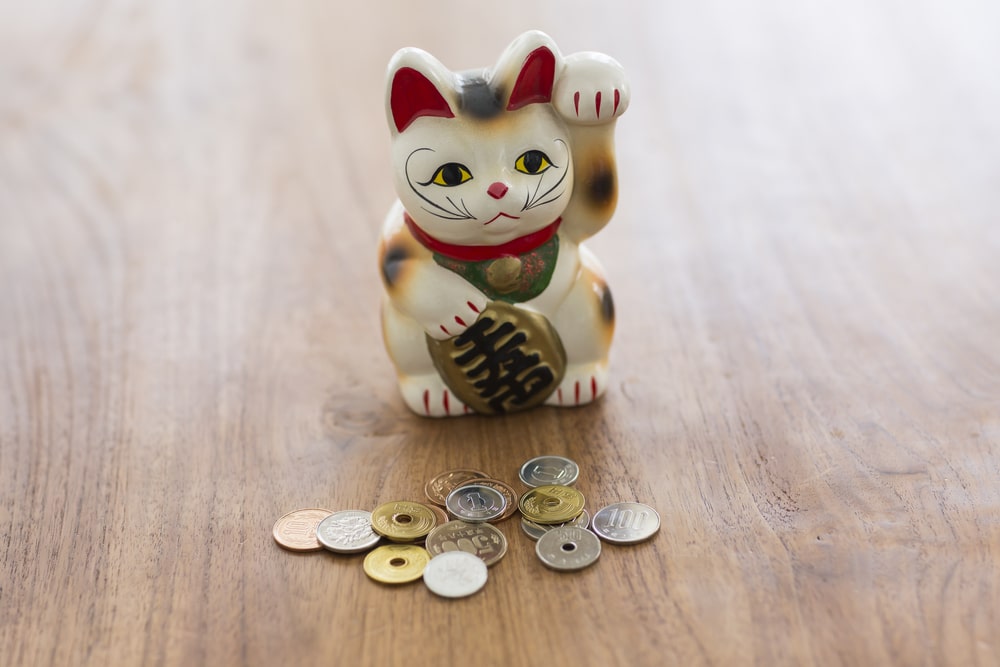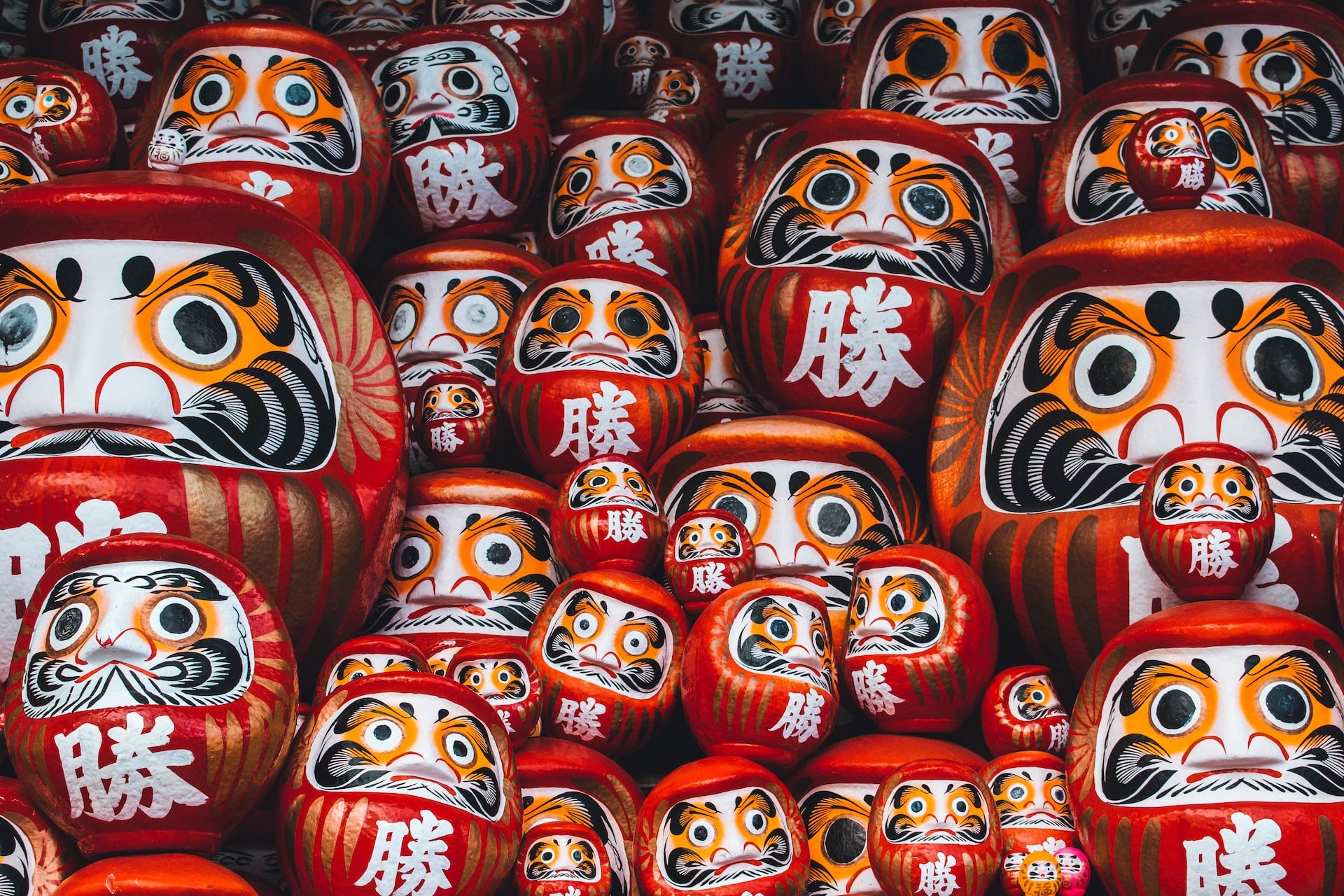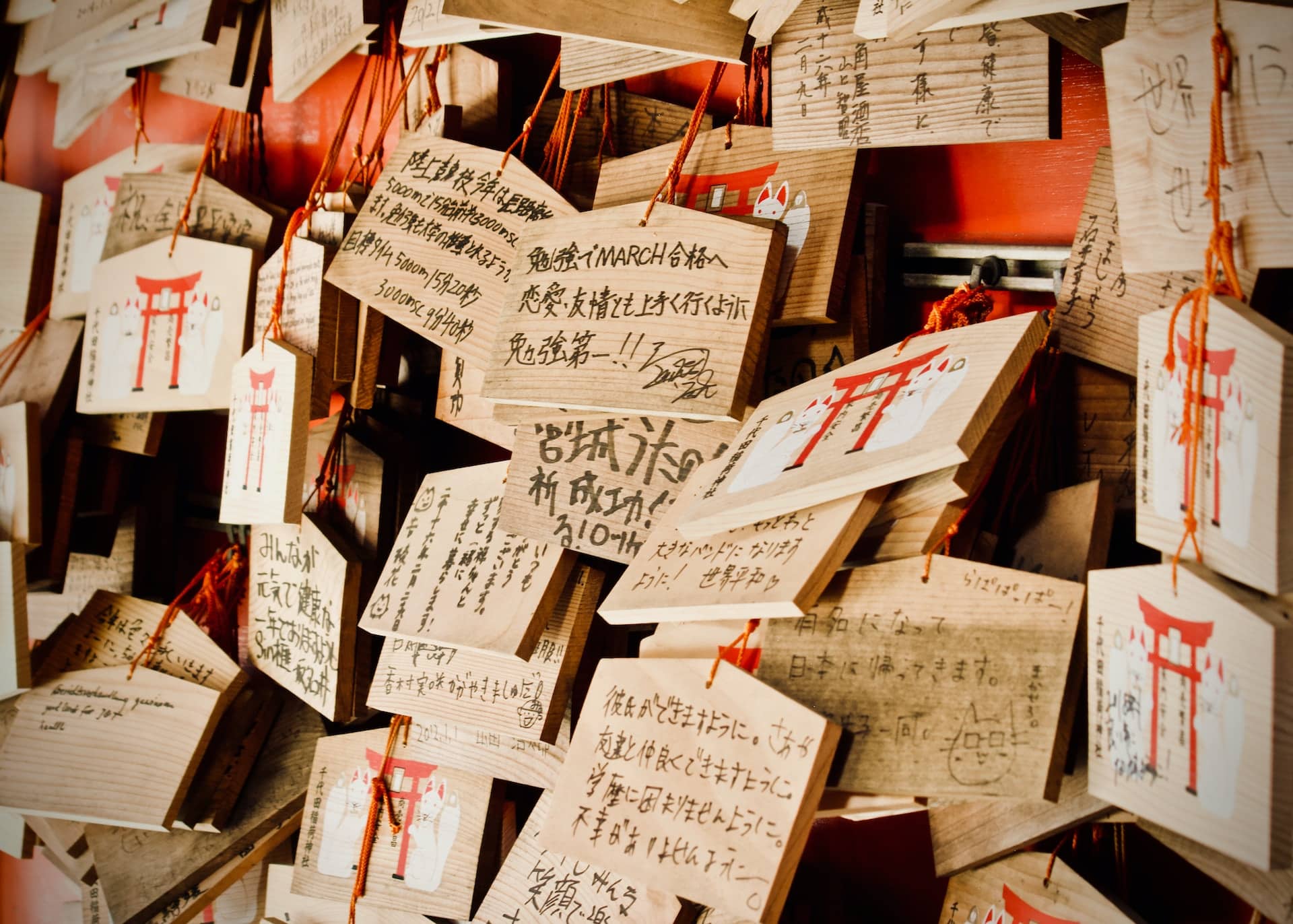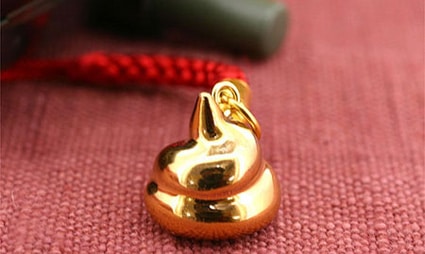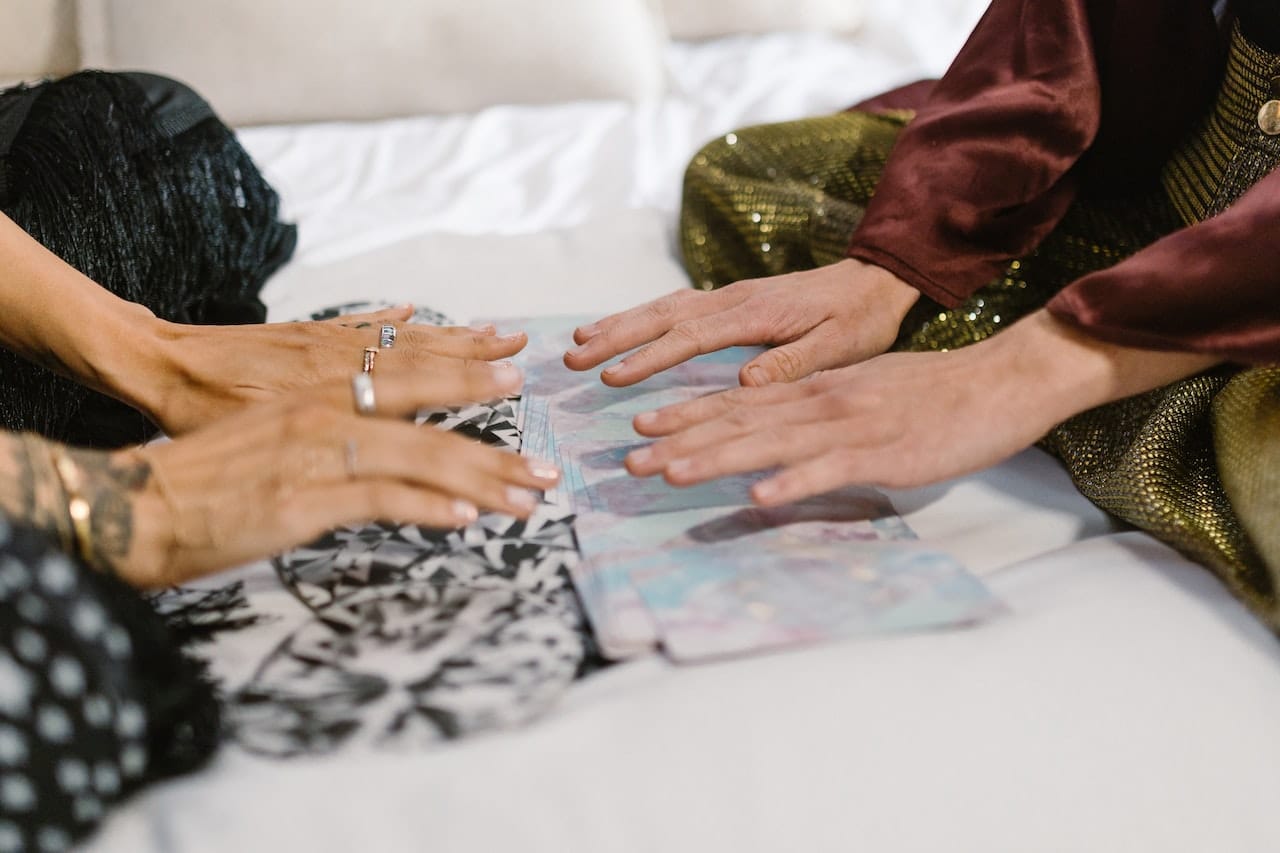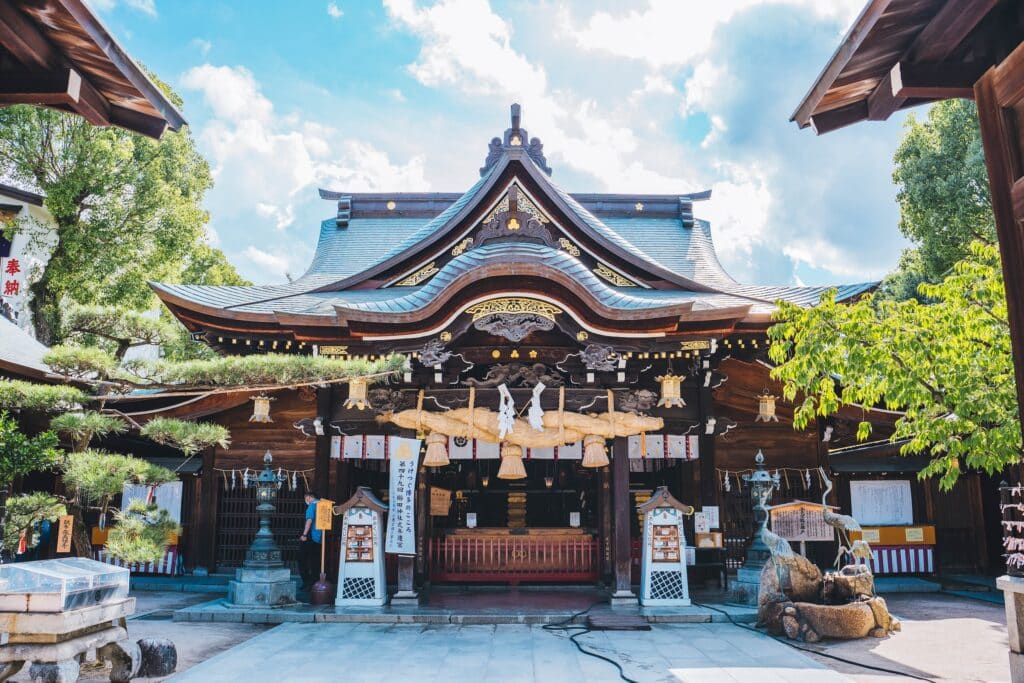
Japanese Fortune Telling: 5 Ways to Seek Good Luck in Japan
Perhaps you’ve heard about Japanese fortune telling from your Japanese language exchange partner.
Or maybe you’ve seen some fortune telling happen on a Japanese drama.
If not, know that for a fee of about 1,000 to 2,000 yen, you can have your fortune told by a fortune teller or palm reader on the many side streets nestled in Japan’s big cities.
Fortune tellers will usually have a small table set up with a sign offering their services, so you can search one out if you visit and want to experience the art of Japanese divining firsthand.
Below are five popular Japanese fortune telling methods and charms that you might see during your next trip to Japan!
Contents
- 1. 御御籤 (お みくじ) — Omikuji
- 2. 招き猫 (まねきねこ) — Beckoning Cat
- 3. 達磨 (だるま) — Daruma Doll
- 4. 絵馬 (えま) — Ema
- 5. 金のうんこ (かね の うんこ) — Golden Poo
- Japanese Fortune Telling Vocabulary
- And One More Thing...
Download: This blog post is available as a convenient and portable PDF that you can take anywhere. Click here to get a copy. (Download)
1. 御御籤 (お みくじ) — Omikuji
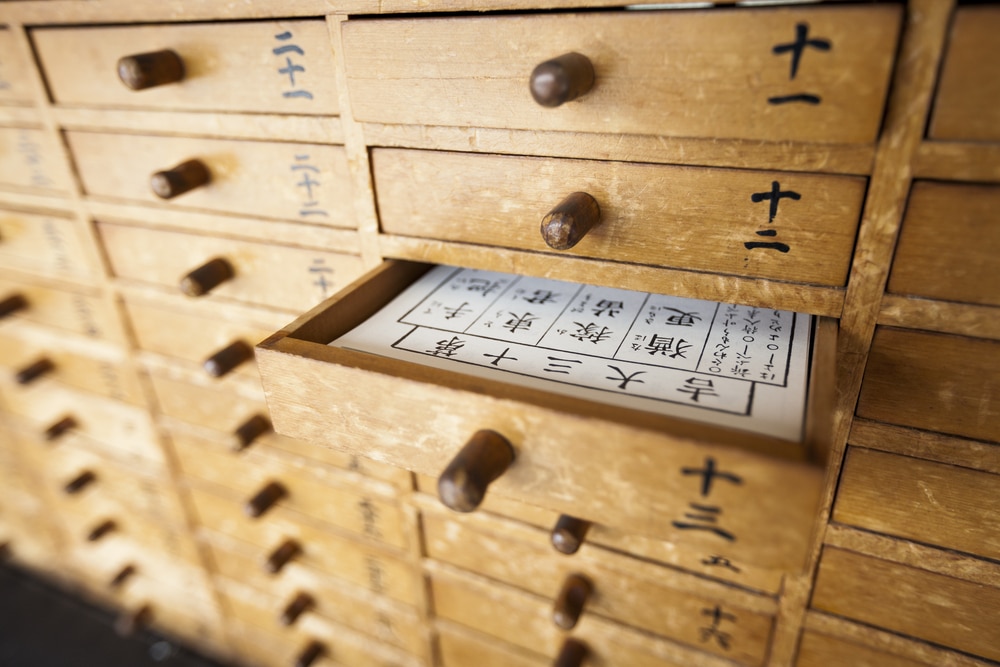
Omikuji literally translates as “sacred lot.” These are fortunes written on strips of paper, typically rolled up or in drawers. You can find omikuji fortunes at shrines and temples throughout Japan.
The traditional way of receiving an omikuji is by shaking a bamboo container filled with small, numbered sticks until one of the sticks falls out. A priest or priestess of the temple then retrieves an omikuji for you that corresponds with the correct number.
Nowadays, it’s more popular to make a small donation (usually just a coin) to the shrine or temple, and then randomly draw an omikuji yourself. Omikuji vending machines are also popular in modern times.
Omikuji fortunes can bring everything from wonderful good luck to terrible bad luck. Below are the classic omikuji fortunes:
- 大吉 is great fortune
- 吉 is good luck or good fortune
- 中吉 is middle fortune
- 小吉 is small luck or small fortune
- 半吉 is half-fortune
- 末吉 is future fortune
- 末小吉 is small future fortune
- 凶 is bad luck
- 小凶 is slight bad luck
- 半凶 is half-bad luck
- 末凶 is future bad luck
- 大凶 is great bad luck
If you’re not fortunate enough to get a lucky omikuji, then you should leave your strip behind at the shrine.
Traditionally, unlucky omikuji are tied to the branches of a tree, where the bad luck will (hopefully) stay instead of following whoever drew the strip.
A good fortune, however, is supposed to be kept with you in a coat pocket or purse.
2. 招き猫 (まねきねこ) — Beckoning Cat
This cat-shaped good luck charm is used for business success and is sometimes called the “lucky cat” or “maneki neko.” A cat with its left paw raised welcomes people and guests, while a cat with its right paw raised welcomes money and fortune.
There are different stories as to where the beckoning cat originated, but most agree that the lucky feline statue was introduced sometime in the Edo period (1603-1867). One of the most popular tales features the second leader of the Hikone domain, Ii Naotaka.
As he was passing the Goutokuji temple, he saw a cat beckoning to him. After following the feline into the temple, it suddenly started to rain, and lightning hit the trees and gates surrounding the temple soon after. Naotaka believed that he narrowly escaped being struck by lightning.
To express gratitude for the cat’s life-saving beckoning, his family shared some of their wealth by joining the Goutokuji temple. The originally poor temple quickly became rich thanks to Naotaka’s family’s help. Also dedicated to the temple, the cat then became a symbol of good luck.
Some argue that the real beckoning cat appeared in Kyoto with a geisha as its owner, while others believe that the beckoning cat brought fortune to passersby at other temples throughout Japan. Many of these temples still stand today, and Goutokuji in particular greets its visitors with hundreds of white maneki neko.
These statues come in a variety of colors, and each has a different meaning:
- Calico, thought to be the luckiest color, invites good fortune and luck
- White invites good fortune
- Black protects from illness and disease and wards off evil
- Gold attracts fortune and wealth
- Red promotes good health, protects from disease and wards off demons
- Pink attracts love
- Silver invites prosperity and longevity
- Blue improves academics
- Green ensures safety
- Yellow encourages happy marriage
Beckoning cats are typically dressed in a collar, bell or bib, as these were popular accessories for family pets during the Edo period.
It’s common to find a maneki neko holding a gold coin called a 小判 (こばん), also used in the Edo period. Others can be seen with a mallet (to attract wealth), a fish (to symbolize good fortune) or other lucky accessories.
Consider trusting your pennies with a beckoning cat the next time you’re on the lookout for a new piggy bank. And if it’s holding a mallet, it’s thought that shaking this lucky cat promotes even more wealth!
3. 達磨 (だるま) — Daruma Doll
The daruma doll is a good luck charm that’s used to wish for something.
Traditionally, the dolls come fully decorated—minus the eyes. Upon acquiring a daruma, the left eye of the doll is painted on and a wish is made. Once the wish comes true, the right eye is painted on.
Again, and like many good luck charms, the color of the daruma doll varies depending on the wished-for outcome:
- Red is for good luck and fortune
- Purple is for health and longevity
- Yellow is for security and protection
- Gold is for wealth and prosperity
- White is for love and harmony
- Black is for health and warding off evil
- Blue is for improving academics
The doll itself is traditionally made of papier-mâché and is weighted on the bottom. It’s believed to bring good luck and encourage others toward their goals because no matter how many times you push it over, it will resume its upright position. Political candidates sometimes use daruma dolls during elections for this reason!
Daruma doll festivals are held in January, where anyone can see and buy a great variety of the dolls throughout Japan. Perhaps the most famous place to see daruma dolls is Takasaki City in Gunma Prefecture, where most of these dolls are made.
If you’re not in Japan during the winter months, visitors can also see hundreds of daruma dolls year-round at the Daruma-ji Temple in the city of Takasaki.
4. 絵馬 (えま) — Ema
You may have seen pictures of this version of Japanese fortune telling before, or if you’ve visited a Japanese shrine, then you might have written a wish on your very own ema.
An ema is a wooden plaque that people write wishes on the back of. Once it’s hung up, it’s believed that the wish is delivered to a god.
The word “ema” is a combination of the words “picture” and “horse.” Horses were thought to be the transportation for the gods. In fact, people used to donate their horses to shrines so that the gods would be more likely to hear their prayers!
The wooden plaque became a good luck charm for those who could not afford to donate an actual horse. The front of an ema traditionally features a picture of a horse, though these days you can find ema in all shapes and sizes at most shrines—cartoon characters, cherry blossoms, hearts and so on.
Some ema don’t feature any picture, so those who’d like to be creative can draw their own!
Ema can usually be bought at a small booth at the shrine. In other cases, visitors are given the choice of making a small donation in a box next to the ema before making their wish.
5. 金のうんこ (かね の うんこ) — Golden Poo
If you’re an anime fan—or simply a fan of all things “cute”—than you may know about this odd good luck charm!
Although not a traditional symbol of fortune, the golden poo has made its way into Japanese society with welcomed arms since its debut around the year 2000.
“Lucky poo” is more of a pun than anything else: The Japanese word for “lucky” is 運 (うん), which looks similar to the Japanese word for “poo,” which is うんこ.
These trinkets are typically made of porcelain coated in gold. A small version can sell for a little over 100 yen while a larger poo can cost just over 2,000 yen.
You can find the golden poo as cell phone charms and key chains—it often replaces the baseball in baseball mitt key chains. If you’d like something even cuter, the lucky poo can be found in a variety of different colors with adorable faces drawn on them!
Japanese Fortune Telling Vocabulary
Here’s some vocabulary that you may run into when having your future predicted:
- 占い師 (うらないし) — Fortune teller
- 占い (うらない) — Fortune-telling
- 手相 (てそう) — Palm reading
- 運勢をみてもらう (うんせい を みて もらう) — To have someone read your fortune
- 手相を見てもらう (てそう を みて もらう) — To have someone read your palm
- 運勢 (うんせい) — Fortune
- 良い運勢 (よい うんせい) — Good fortune
- 悪い運勢 (わるい うんせい) — Bad fortune
Ready to have your fortune divined?
You can plan a trip to Japan, eat some tasty food and pick up some lucky souvenirs while you’re there. Or, you can take a virtual trip by looking for videos about fortune telling and related topics on the FluentU learning program.
FluentU takes authentic videos—like music videos, movie trailers, news and inspiring talks—and turns them into personalized language learning lessons.
You can try FluentU for free for 2 weeks. Check out the website or download the iOS app or Android app.
P.S. Click here to take advantage of our current sale! (Expires at the end of this month.)

Wishing you great fortune and good luck in the future!
Download: This blog post is available as a convenient and portable PDF that you can take anywhere. Click here to get a copy. (Download)
And One More Thing...
If you love learning Japanese with authentic materials, then I should also tell you more about FluentU.
FluentU naturally and gradually eases you into learning Japanese language and culture. You'll learn real Japanese as it's spoken in real life.
FluentU has a broad range of contemporary videos as you'll see below:

FluentU makes these native Japanese videos approachable through interactive transcripts. Tap on any word to look it up instantly.

All definitions have multiple examples, and they're written for Japanese learners like you. Tap to add words you'd like to review to a vocab list.

And FluentU has a learn mode which turns every video into a language learning lesson. You can always swipe left or right to see more examples.

The best part? FluentU keeps track of your vocabulary, and gives you extra practice with difficult words. It'll even remind you when it’s time to review what you’ve learned. You'll have a 100% personalized experience.
Start using the FluentU website on your computer or tablet or, better yet, download the FluentU app from the iTunes or Google Play store. Click here to take advantage of our current sale! (Expires at the end of this month.)
